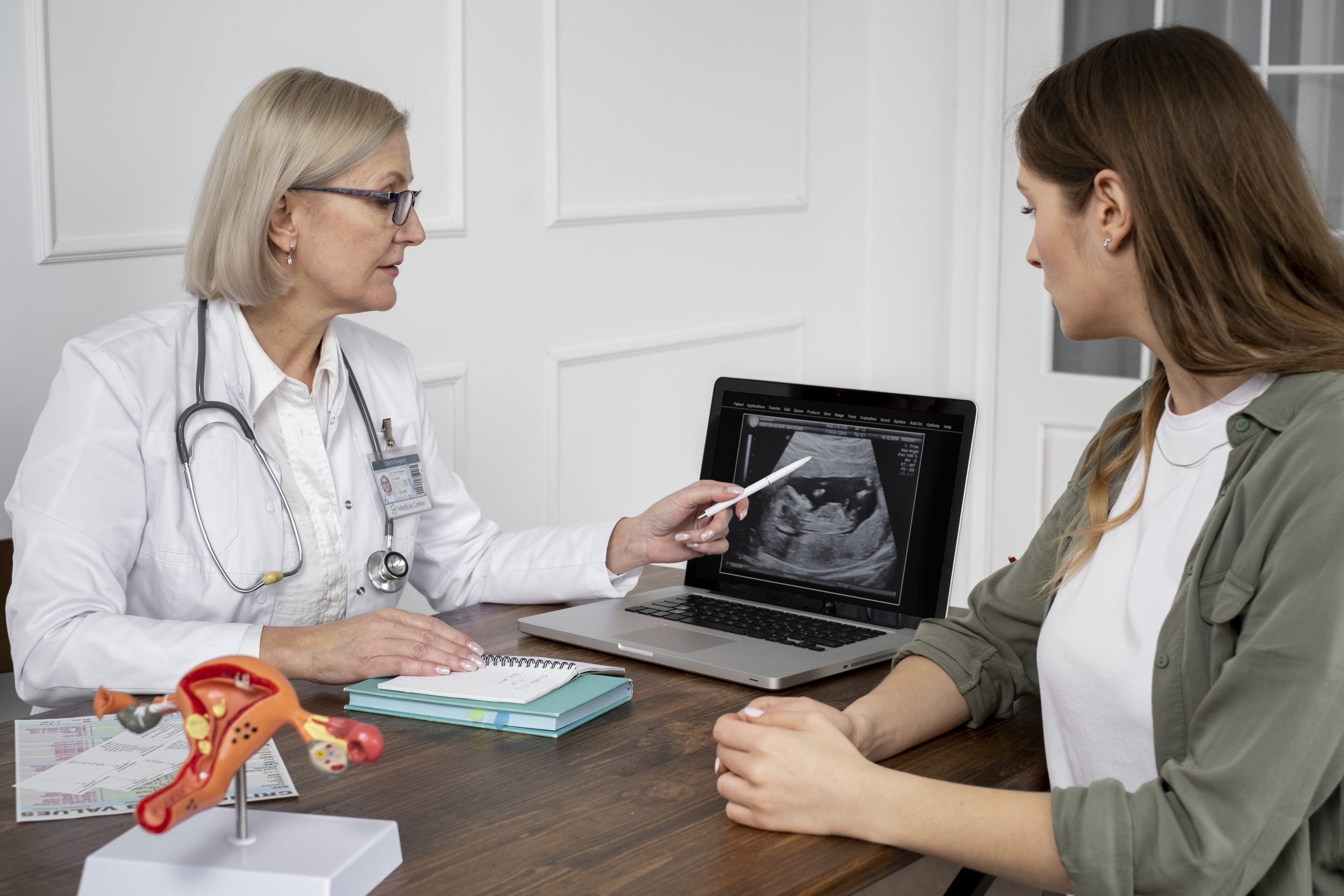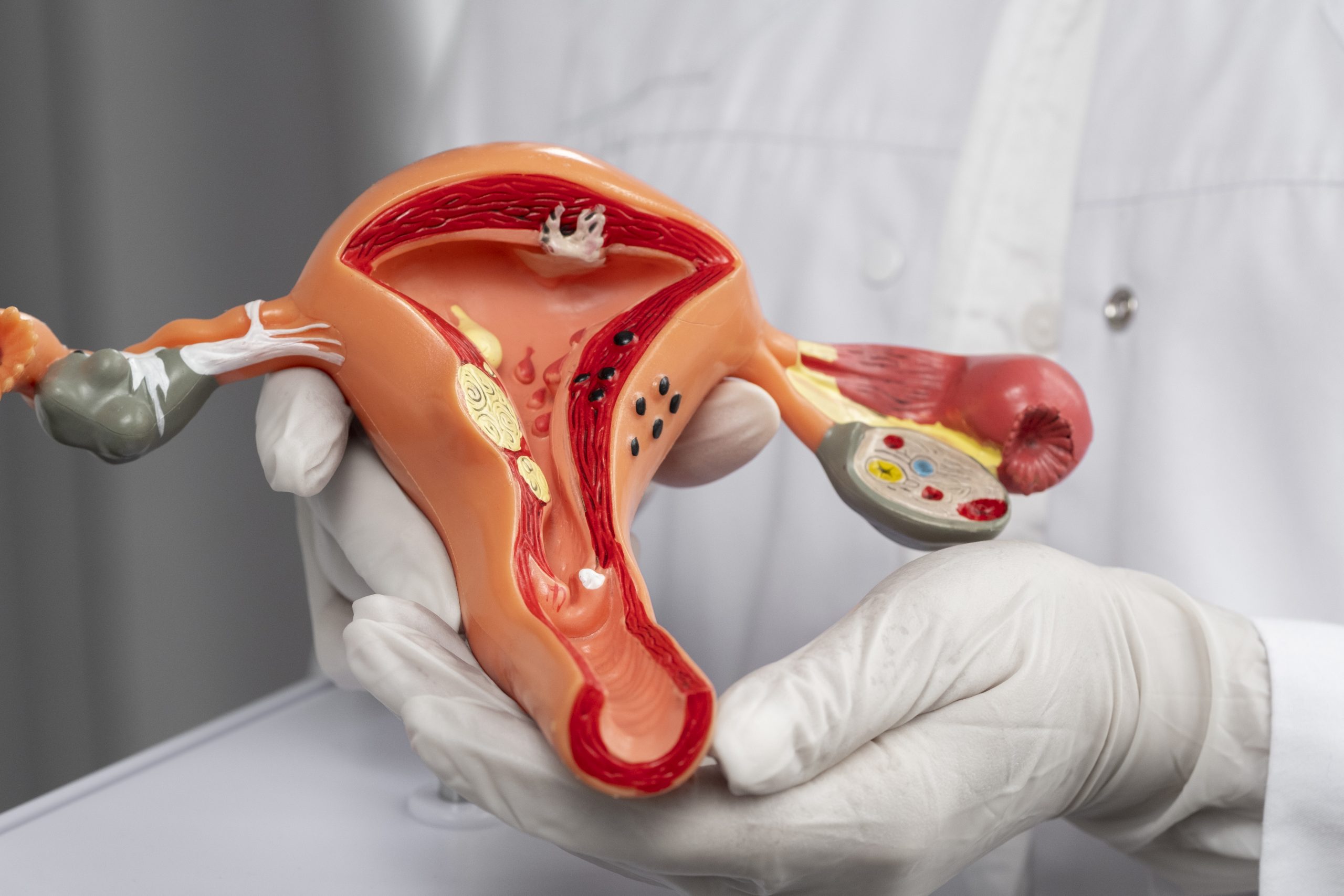About 90% of fibroid cases can be treated WITHOUT Surgical removal of the uterus.
With Uterine Fibroid Embolization (UFE)
Safeguarding Your Motherhood With Non-Surgical UFE
UFE is a minimally invasive alternative to hysterectomy or myomectomy. So you can be fibroid-free without risking your chances of being a mother!
It offers improvement and elimination of fibroid symptoms, reducing the size of your uterus, and preserving your fertility. This procedure is performed by a specially trained interventional radiologist in a highly sophisticated, safe clinical environment.
The majority of women who choose UFE experience normal menstrual cycles after the procedure, and with proper guidance and care, also achieve a successful pregnancy.

Why should we choose UFE?
With fibroid embolization
- You have a tiny incision (<1 inch)
- All you need is a small band-aid
- Your uterus remains safe and fertile
- You recover much faster
- It can be suitable at any age

Bringing Advanced
UFE to the UAE
Dr Sandeep Burathoki
Consultant Interventional Radiologist
Specializing in UFE
Dr. Sandeep Burathoki is a neuro interventional and interventional radiologist with 17 years of vast experience in treating complex neurovascular conditions. He serves his patients with a mission to help women suffering from fibroids non-surgically.
He has gained vast knowledge and experience by working in multiple countries and treating women of all ages and ethnicities. His specialized knowledge in treating uterine fibroids with internventional radiology has helped 1000+ women avoid uterus surgeries like hysterectomy or myomectomy.
A member of



Know Your Fibroids
FAQs
No, fibroids are generally non-cancerous growths that develop in the uterus. These benign tumors are composed of muscle and fibrous tissue. While they can cause symptoms such as heavy menstrual bleeding and pelvic pain, fibroids are not cancerous and do not increase the risk of uterine cancer.
No, fibroids and adenomyosis are not the same. Fibroids are non-cancerous growths in the uterus, while adenomyosis involves the abnormal presence of endometrial tissue within the uterine muscle. Both conditions can cause pelvic pain and heavy menstrual bleeding but have distinct characteristics and require different approaches for diagnosis and treatment.
Yes, it is possible to get pregnant after the removal of fibroids, depending on various factors such as the size and location of the fibroids. The success of fertility post-surgery varies, and it’s advisable to consult with a healthcare professional for personalized guidance based on your specific situation.
Fibroids can impact fertility by affecting the uterus or blocking fallopian tubes. While not always causing permanent infertility, they may lead to difficulty conceiving or maintaining a pregnancy. Treatment options exist, including surgical removal or assisted reproductive technologies, but individual outcomes vary. Consultation with a healthcare professional is recommended.
Uterine fibroid embolization is an alternative to traditional treatments such as surgical removal of the fibroids (myomectomy) or hysterectomy (removal of the entire uterus). UFE is a minimally invasive image-guided procedure that significantly shrinks fibroids by cutting off their blood supply.
Blogs

Adenomyosis and Its Impact on Fertility: Unraveling the Connection
Adenomyosis and Its Impact on Fertility: Unraveling the Connection Can adenomyosis affect fertility? Research suggests that there is a potential link between adenomyosis and fertility

Shrinking Fibroids with Diet: Is It Possible?
Shrinking Fibroids with Diet: Is It Possible? Can your diet influence the size and management of fibroids? Fibroids, non-cancerous growths in the uterus, can present





